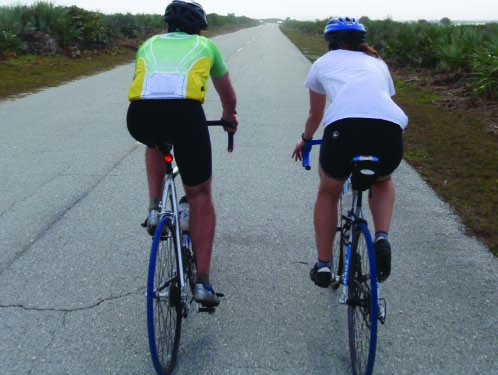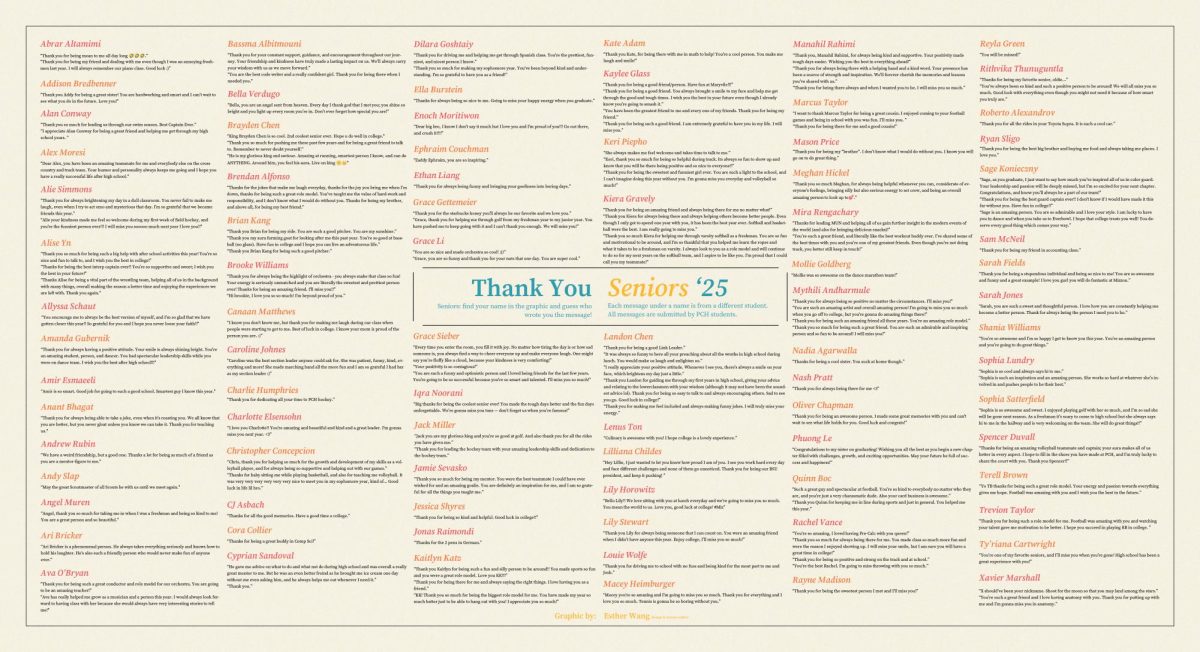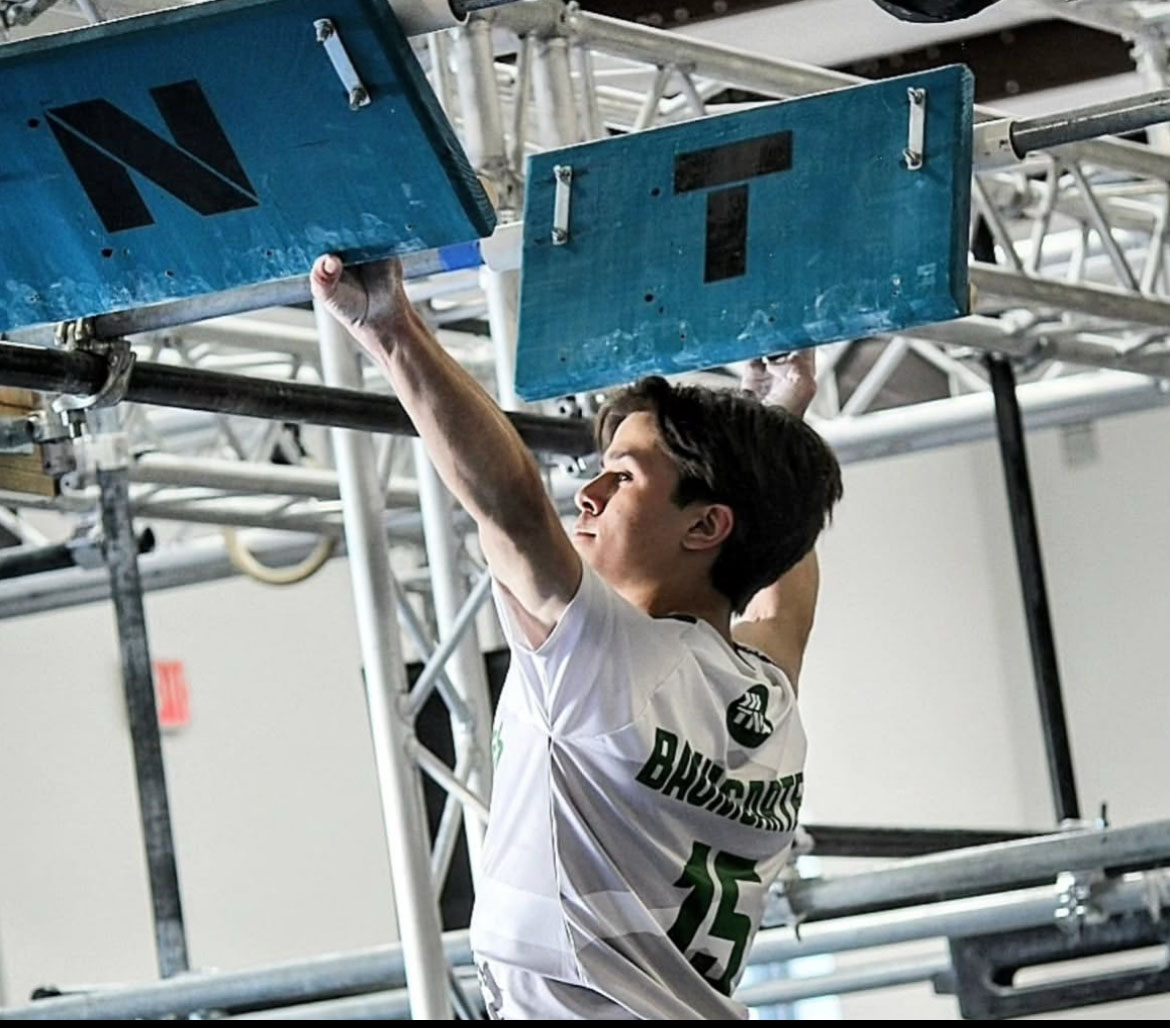The Olympic Triathlon leads off with a 0.93 mile swim followed by a 25 mile bike ride. Ending the race to the finish is a 6.2 mile run, and to say that athletes are exhausted upon its completion is an understatement. Meanwhile, for science teacher Jennifer Meyer, such triathlons are child’s play compared to the Ironman she is training for.

The Ironman competition is the pinnacle of the triathlon world. The race begins with a 2.4 mile swim, which is then followed by a 112 mile bike ride. The event concludes with a full marathon, equivalent to a 26.2 mile run.
Jennifer and her husband, John, will participate in the Vineman Triathlon being held in Sonoma County, Calif. on July 28. Even though they had already participated in the Chicago Marathon and a half-Ironman, they had never really given a whole lot of thought towards taking part in the full Ironman.
“Preston, one of my best friends, sent my husband and I an e-mail saying that he was thinking of signing up for an Ironman. The e-mail went on and on as he tried to convince us to sign up with him,” Jennifer said. “As I read the e-mail I was literally laughing out loud, thinking that there was no way I would ever do such a thing. For some reason the idea grew on us and a week later we signed up.”
Once they were committed, Jennifer and John began their strict training regimen in mid-February.
According to Jennifer, their first full week of preparation consisted of 15 miles of running, 60 miles of biking, and 2,700 yards of swimming. However, it was like a warm up for the more intense training that lays ahead.
“We wrote our schedule to gradually build each of the three elements until the max week, which occurs three weeks before the race: 44 miles running, 176 miles biking, 7600 yards swimming,” Jennifer said. “For the weeks between the max week and the Ironman we will back off a little bit to let our muscles recover.”
Despite the vigorous training schedule, Jennifer feels that she needs to make some improvements before the day of the race.
“The biking is the part which I am least confident about. I am pretty good on flat ground or rolling hills, but steep hills are my big weakness,” Jennifer said. “I have a computer on my bike that tells me how fast I am going so that I can track my improvement on hills from workout to workout. Although I am improving, I still have a long way to go.”
Jennifer mentions that the race is expected to burn between 8,000 and 10,000 calories from her body and, as a result, she has been preparing for the effects it could have on her body.
“One of the hardest parts of doing an Ironman is consuming enough fluids and calories to maintain the activity without having major stomach issues,” Jennifer said. “My husband and I have actually been training our stomachs by eating food while we run and bike.”
Even if training goes as planned and the pair feels prepared for race day, there are still other factors that must be taken into account. Parkway Swim Club coach Thom Bick, who has completed three Ironman races, can attest to the fact that athletes must be prepared for anything that comes their way.
“It could be raining, cold, hot, windy, you could feel sick, injuries could plague you, or you could have bike malfunctions,” Bick said. “ Not having control [over what happens] is the hardest part.”
Contestants are given a 16.5 hour time limit to complete the race, while the women’s world record for the championship course in Hawaii is 8 hours and 54 minutes. Assuming that she does not experience any setbacks in training, Jennifer hopes to finish the event in 13 hours. With her husband at her side, it has made getting through the rough training easier to overcome and meeting her goal more likely.
“Having my husband as a training partner is amazing. We are able to push each other more than we could if we were training individually,” Jennifer said. “It is a lot harder to skip a workout after a long day of work when you walk into the door of your house and your husband is already dressed to go running.”
Regardless of the results, John agrees that competing and training with his wife makes the experience all the more rewarding.
“The biggest thing I gain from this experience is the fun time Jen and I spend together, outside, away from cell phones,” John said. “Also, when you’re training this much, you can eat all the ice cream you want.”








